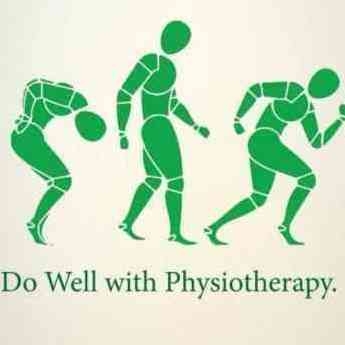+918042754929

This is your website preview.
Currently it only shows your basic business info. Start adding relevant business details such as description, images and products or services to gain your customers attention by using Boost 360 android app / iOS App / web portal.
#IDIOPATHIC_Toe_Walking #Definition : Idiopat...
#IDIOPATHIC_Toe_Walking #Definition : Idiopathic toe walking is a term used to define a gait in which a person walks with a toe‐toe gait pattern without any known correlated etiology *#_idiopathic_toe_waliking_is_when_your_child_continues_to_walk_on_their_tip_toes_beyond _three_years_of_age Toe walking refers to a walking pattern in which a child walks on the balls of their feet and there is no contact between the heels and the ground. There are many medical reasons for this type of walking pattern. This handout is about a specific type of toe walking called idiopathic toe walking. Some children with idiopathic toe walking are able to walk with their feet flat when asked to do so. When these children wear shoes, they might not walk on their toes. Their toe walking is often exaggerated when they walk bare-footed from one room to another or when they walk on surfaces that have increased tactile sensations (carpet, cold tile, grass). These children typically do not have tightness in their Achilles #Key_Points : •Idiopathic toe walking is when a child continues to walk on their tip toes beyond three years of age. •Idiopathic toe walking can lead to tight calf muscles and decreased movement of the ankles. •Treatment for children younger than six years of age include calf stretches, Achilles tendon stretches and sit to stand exercises. •Treatment for children six years of age and older include calf stretches and other exercises including marching on the spot, walking uphill and on uneven surfaces, heel walking and squats. > #Features_of_idiopathic_toe_walking •Although we do not really know why some children prefer to walk on their toes, we do know that •#idiopathic_toe_walkers: •walk on tip toes on both sides •are constantly balancing on their toes •are physically able to keep up with other children their age •walk with straight knees •will often be able to stand with their feet flat on the ground •often have a family history of toe walking #Why_treat_ITW : #Physical_symptom Weight bearing skeleton will adapt form to function, especially in young children •Hypertrophy of talarneck •Underdeveloped calcaneus #Pain •Calf pain and increased calluses and corns on balls of feet. #Soft_tissue_problems •Tendency towards pes cavus •Fixed achillestendon tightness and calf contractures #NeuroDevelopmental_impairment •Strong evidence for increase ankle sprains with gastroctightness •Balance ? •Vestibular seeking? •Back pain? #What_causes_idiopathic_toe_walking? • Tactile processing: an increased response to touch sensations • Altered proprioceptive processing (sensing the body’s position in space) • Vestibular processing (maintaining balance) • Visual processing • Flexibility of leg and foot muscles • Overall body strength • Family history: parents or siblings who have a history of toe walking #Presentation •Patient walks with a bilateral toe to toe gait intermittently or consistently •They do not typically present with pain •They may or may not have tight heel cords with decreased ankle dorsi‐flexion and possibly not be able to stand in plantigrade position if have significant equinas contractures #Diagnosis •Past Medical/Surgical history to include birth history, developmental milestone achievement, evaluation of family history for progressive neuromuscular conditions, .#Review_of_systems: •Thorough history with specific attention to #musculo‐skeletal and #neurologic symptoms especially bowel/bladder pattern difficulties #Diagnostic_Tests •if patient is a chronic toe‐toe walker‐with abnormal neurologic exam and/or abnormal bowel/bladder function recommend getting an MRI of the brain/spine •If positive Gowers sign obtain CK blood level •Consider MRI of brain and spine and referral to orthopaedic surgeon, even if no neurologic signs/symptoms, if despite casting, continues to toe walk and presents with significant equinus contractures #Physical_examination •Specific attention to musculo‐skeletal and neurologic exams. •In regard to musculo‐skelatal exam, make sure to evaluate ankle motion and gait. •In regard to neurologic exam, make sure to specifically check for the following: DTRs, muscle wasting, babinski, clonus, hypertonia, gowers sign, and signs of spinal dysraphism (spinal dimple, hairy patch). #Examination: ROM Strength Posture/Alignment Balance Gait Sensory processing screening #Evaluation: •Ankle DF with knee ext •Hamstring moderately tight •Constant toe walking •Can stand with heels down with knee hyperextension, hip flex, and outtoeing; unable to hold static standing on toes •Poor single leg balance, unable to squat, hesitant down stairs, #Can_idiopathic_toe_walking_be_treated For young children with idiopathic toe walking without Achilles’ tendon contractures, watching and waiting is an option. Some younger children benefit from physical therapy where they are taught how to stretch their legs, feet and toes. Night-time bracing with plastic orthotics may be helpful. In some cases, idiopathic toe walking may resolve on its own. For preschool and older children with idiopathic toe walking with Achilles’ tendon contractures, some of these treatment options may be needed #Physical_Therapy: This involves stretching, strengthening, gait training and home exercise. #Occupational_Therapy: This involves helping your child learn sensory integration strategies. #Orthotics: Plastic splints can be worn on the feet and ankles during the night to maintain the stretch/flexibility of the Achilles’ tendons. Occasionally, they are also worn during the day. #Serial_Casting: This involves a series of casts to stretch your child’s Achilles’ tendons. #Orthopedic_Surgery: This involves a surgical procedure to lengthen the heel cord (Achilles’ tendon). This is done only in children over the age of 4 to 5 years in whom the other treatment interventions have been unsuccessful in stretching the Achilles’ tendons. #PT_intervations: Stretching Night splinting Therex/Strengthening Joint mobilizations Balance training (especially standing balance and posterior weight shifting) Gait training/Treadmill training Motor Control/Motor Learning Strategies Taping (if required ) Orthotics (AFO, , ) Best and advance peadriatic physiotherapy clinic in nallasopara vasai Virar

